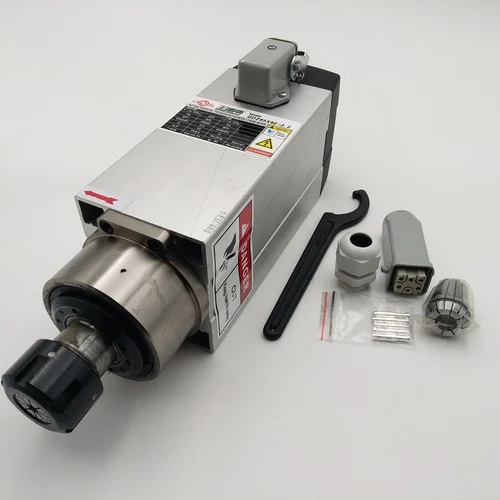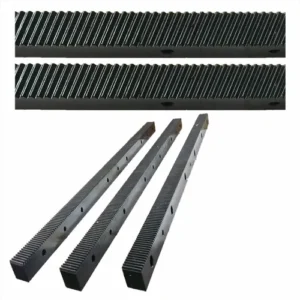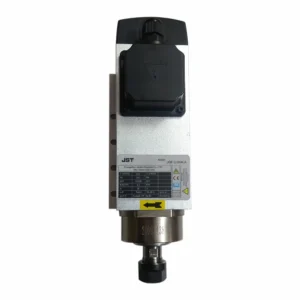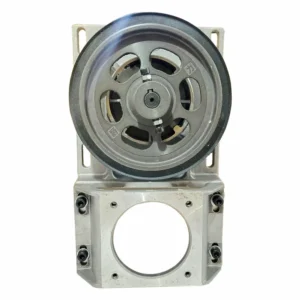Overview:
- Type: Air-Cooled CNC Spindle Motor
- Primary Use: Provides rotational power for cutting, engraving, and milling operations in CNC machines.
Key Features:
- Cooling Method:
- Air Cooling: Utilizes air flow to dissipate heat generated during the spindle’s operation. This is typically achieved through built-in fans that blow air over the spindle body to keep it cool.
- Advantages: Generally simpler and less maintenance-intensive than water-cooled spindles. It does not require a separate cooling system, which can simplify installation and reduce the risk of leaks.
- Spindle Power:
- Power Range: Available in a variety of power ratings, typically ranging from 1.5 kW to 5.5 kW or more, depending on the requirements of the CNC machine and the materials being processed.
- Application: The power rating determines the spindle’s capability to handle different materials and cutting tasks.
- Speed Range:
- RPM: Air-cooled spindles usually offer a wide range of rotational speeds, typically from around 6,000 RPM to 24,000 RPM or higher.
- Control: Speed control can be manual or integrated into the CNC machine’s control system, allowing for precise adjustments based on the material and tool requirements.
- Construction:
- Materials: Often made from high-quality aluminum or steel to ensure durability and thermal conductivity.
- Design: Features a robust design to withstand the stresses of high-speed operation and cutting forces. The housing is designed to facilitate effective airflow for cooling.
- Mounting and Compatibility:
- Mounting Options: Typically comes with various mounting options to fit different CNC routers or machines. Common types include flange mounts and collet mounts.
- Compatibility: Designed to be compatible with a range of CNC machines, ensuring versatility in different setups and applications.
- Tool Holders/Collets:
- Types: Uses standard collet systems (e.g., ER collets) to hold the cutting tools securely. Various collet sizes are available to accommodate different tool diameters.
- Replacement: Collets and tool holders are interchangeable, allowing for easy swapping and adjustments based on the cutting tool requirements.
- Noise Levels:
- Operation: Air-cooled spindles can generate more noise compared to water-cooled spindles due to the operation of the cooling fan. Noise levels can vary based on the spindle’s power and speed.
- Maintenance:
- Simplicity: Requires less maintenance compared to water-cooled spindles as there is no need to manage coolant levels or handle potential leaks.
- Cleaning: Regular cleaning of the air cooling system and ensuring proper airflow can help maintain performance and longevity.
- Performance:
- Efficiency: Provides reliable and consistent performance for a wide range of cutting and engraving tasks.
- Durability: Designed to handle the high speeds and loads associated with CNC machining, contributing to a long operational lifespan.
Applications:
- Woodworking: Ideal for cutting and carving wood, MDF, and other similar materials.
- Plastic Machining: Suitable for processing various plastic materials, including acrylic and PVC.
- Light Metal Cutting: Can be used for light-duty machining of softer metals such as aluminum.
- Engraving: Perfect for detailed engraving on a range of materials.
Benefits:
- Simplicity: No need for a separate cooling system or coolant management, simplifying installation and operation.
- Maintenance: Easier to maintain with fewer components to manage compared to water-cooled spindles.
- Cost-Effective: Typically less expensive than water-cooled spindles due to the lack of additional cooling infrastructure.
- Reliability: Provides reliable performance for many common CNC routing and engraving tasks.





Reviews
There are no reviews yet.